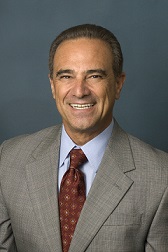 Colonoscopy is a high-volume procedure for many gastroenterologists, ambulatory surgery centers and endoscopy centers. As the demand for high-quality, low-cost care grows, many providers are turning to alternative payment models.
Colonoscopy is a high-volume procedure for many gastroenterologists, ambulatory surgery centers and endoscopy centers. As the demand for high-quality, low-cost care grows, many providers are turning to alternative payment models. Robert Minkin, MBA, FACHE, senior vice president of The Camden Group, explains why colonoscopy is a fit for bundled payment and details the steps to adopt this model.
As a high-volume and relatively uncomplicated procedure, colonoscopy is a natural fit for bundled payments. "Any procedural area that can easily deliver consistent outcomes and a fixed global price is a good place to think about deploying a bundle for those that have not yet developed broader episode of care arrangements," says Mr. Minkin.
At minimum a global colonoscopy payment bundled would include:
• Facility fee
• Physician fee
• Anesthesiology fee
If ASC leaders want to go a step further and create a more inclusive bundle, the pathology fee is a possible addition.
Building a bundle: step by step
• Assemble all fees. Determine the total being charged to a payer for a colonoscopy. "Claims data is often required to assemble this correctly," says Mr. Minkin.
• Explore the possibility of redesigning care. "Providers should identify what opportunities might be evident for redesigning care to remove all unjustified clinical variations in care. Pricing can then reflect these improvements," he says.
• Approach payers. The Centers for Medicare and Medicaid Services Innovation Bundled Payments for Care Improvement Initiative covers four models: retrospective acute care hospital stay only, retrospective acute care hospital stay plus post-acute care, retrospective post-acute care only and acute care hospital stay only. "With bundled payments to date, CMMI has allowed gain-sharing based on savings made in the episode with the physicians who create them. This can be a huge incentive for the physicians who often are searching for new revenue streams," says Mr. Minkin.
CMMI has not expanded to include ambulatory care in its bundled payment initiative, but ASC leaders can approach commercial payers. "Most commercial bundled agreements seek to trade more volume from the payer for better pricing and better quality and access," he says.
"Hospital-based or freestanding ASCs can assemble these arrangements if they can clearly see the benefit, such as the development of narrow networks in exchange for the added risk and higher value delivered," says Mr. Minkin.
More Articles on Gastroenterology:
InterStim in the ASC Setting: 2 Surgeons Weigh In
What Does ICD-10 Mean for Gastroenterologists?
5 Recent GI-Driven Facility Openings & Plans


